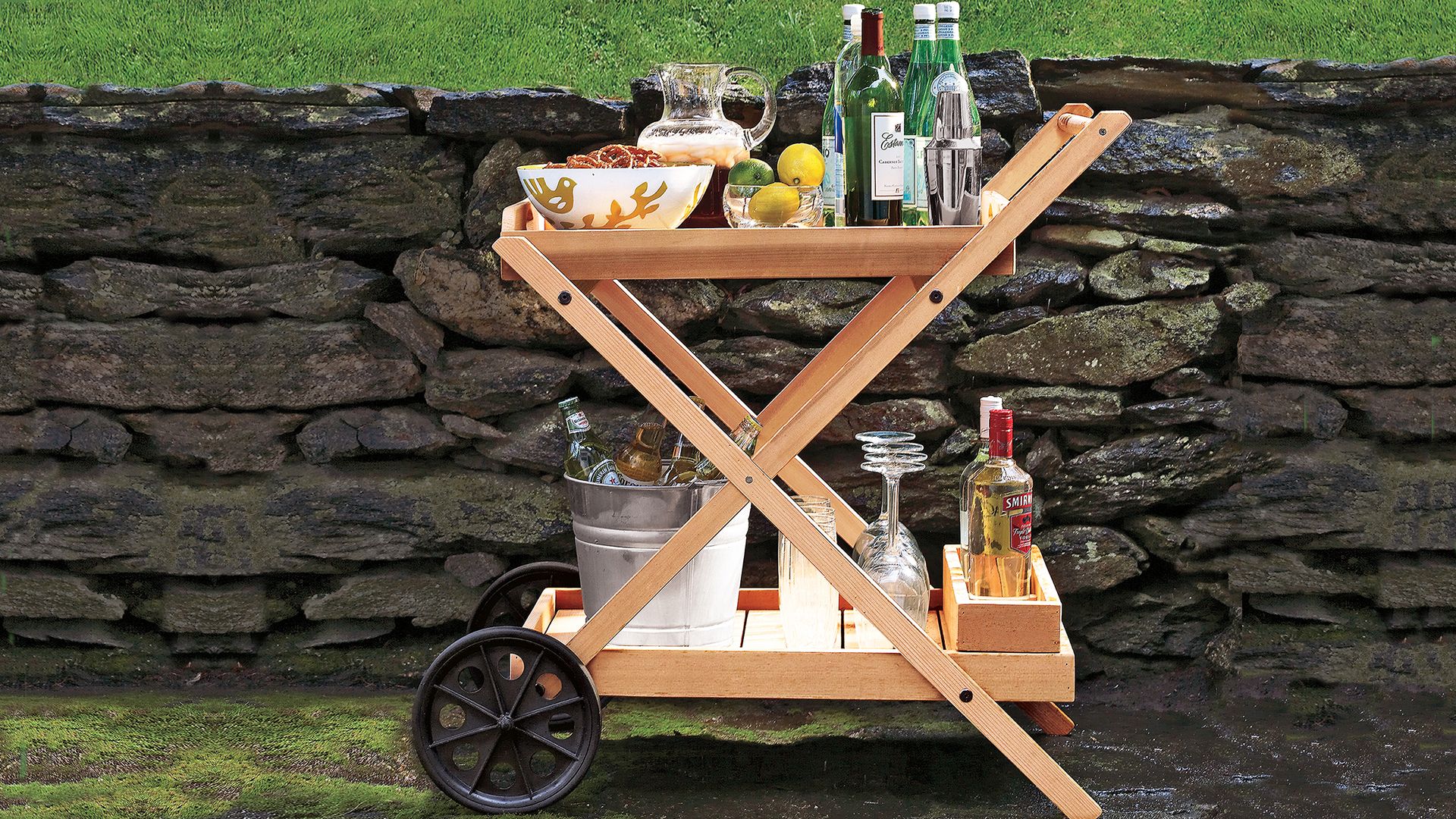Project details
Skill
Cost
Estimated Time
An outdoor bar cart is the perfect addition to elevate your backyard entertaining. This mobile serving station combines functionality with style, allowing you to transport drinks and snacks easily. In this guide, we’ll walk you through building your own outdoor bar cart step by step. This project is suitable for intermediate-level DIYers and can be completed over a weekend.
Tools and Materials for an Outdoor Bar Cart
The image below shows the materials you’ll need for this project:
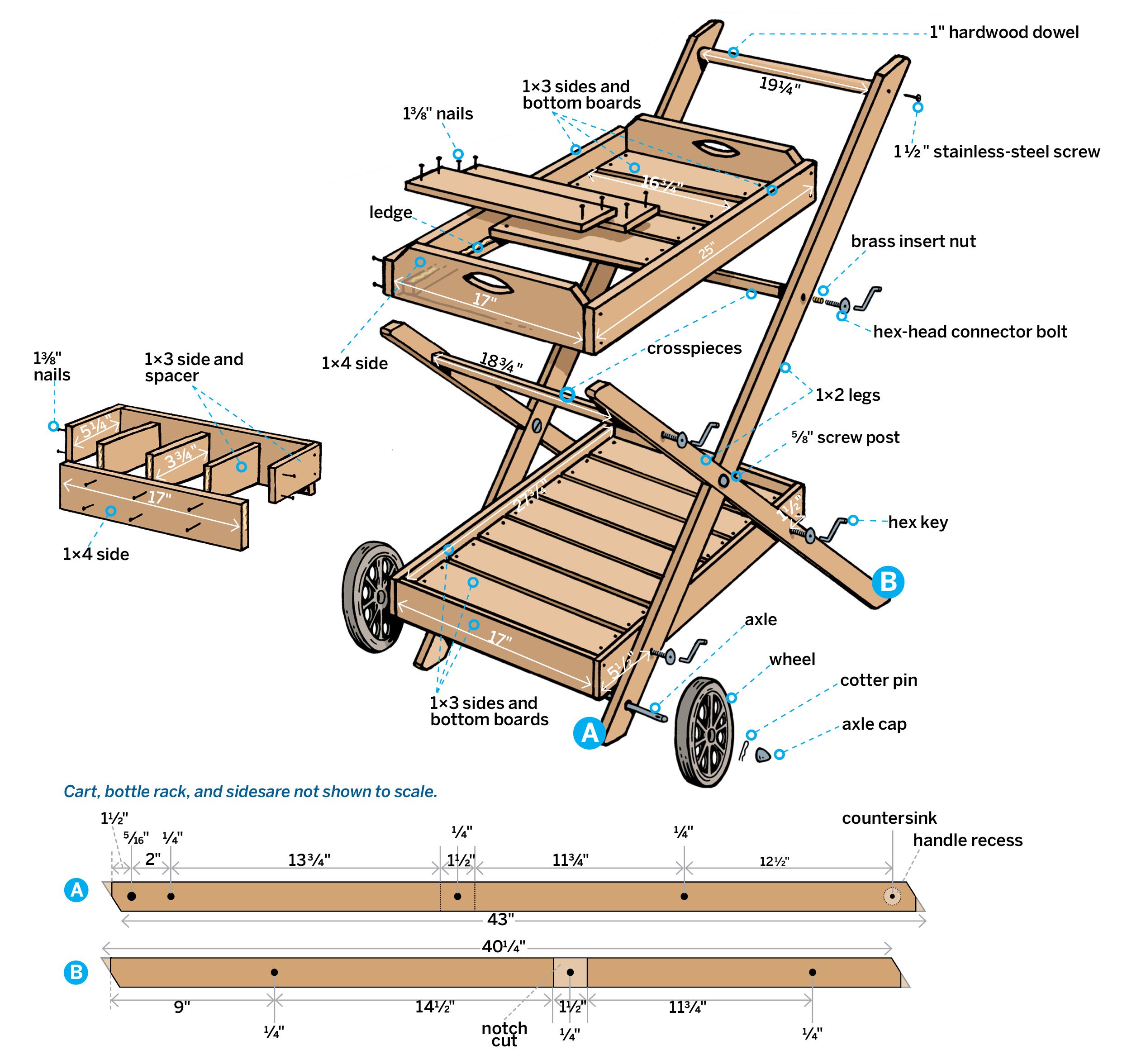
Additionally, gather the following tools:
 Miter saw
Miter saw Jigsaw
Jigsaw Pneumatic brad nailer
Pneumatic brad nailer Wood chisel
Wood chisel Drill/driver
Drill/driver Drill bit – 1/4-inch
Drill bit – 1/4-inch Drill bit – 5/16 inch
Drill bit – 5/16 inch Combination countersink drill bit
Combination countersink drill bit Spade bit – 1-inch
Spade bit – 1-inch Slotted screwdriver
Slotted screwdriver Hex keys
Hex keys Sandpaper – 120-grit
Sandpaper – 120-grit Flat hand file
Flat hand file
Step-by-Step Guide To Building a Bar Cart
Follow these instructions to complete your bar cart project.
Step 1: Cut the Pieces
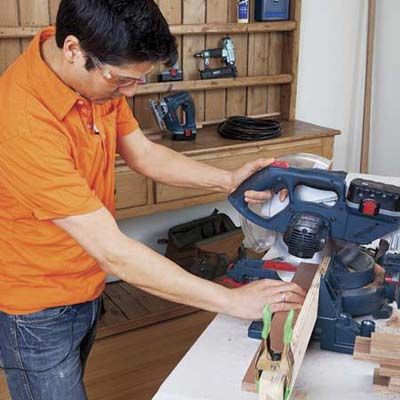
Begin by cutting all the necessary pieces for your bar cart. Use a miter saw with a stop block to create consistent lengths for multiple cuts. For the top tray, cut two 1×4 short sides and two 1×3 long sides. The bottom tray requires short and long sides cut from 1x3s. You’ll also need 19 1×3 bottom boards (nine for the top tray and ten for the bottom). Additionally, rip a 1×2 in half to create four ledges that will support the bottom boards.
For the cross pieces that support the removable top tray, cut two deck pickets to size. Cut the cart’s handle from a 1-inch hardwood dowel. Don’t forget to trim off the corners of the top tray’s 1×4 short sides to match the height of the long sides. After cutting, use a wood file to round over the cuts and smooth all pieces with sandpaper and a block for a polished finish.
Step 2: Cut Out the Top Tray’s Handles
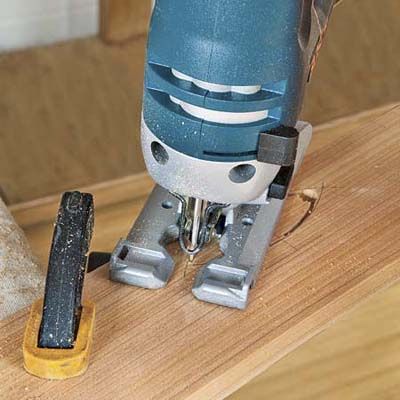
To create handles for easy carrying, use a paint can to trace centered arcs on both 1×4 (short) tray sides. Check that the cuts are at least ½ inch below the top edge and 1¾ inches above the bottom edge of the 1×4. Use a jigsaw to cut out the handles carefully, then smooth the cut surfaces with a file for a professional finish. Making the handles not only adds functionality but also improves the visual appeal of your cart.
Step 3: Attach Ledges to the Long Sides
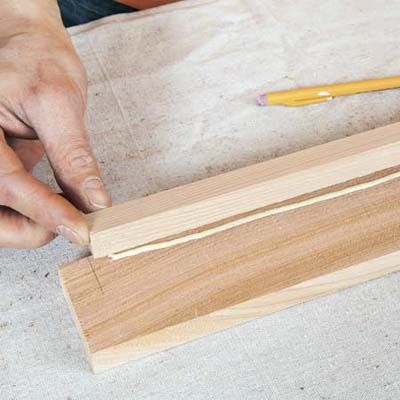
Lay a long side flat and use a 1×3 turned on edge to mark off space at the ends where the short sides will be attached. Apply wood glue along one edge of the long side between these marks. Press a ledge into the glue, making sure it’s flush with the edge of the side piece.
Secure the ledge using a nail gun with 1⅜-inch nails, spacing them a few inches apart. Repeat this process for all four long sides to create a sturdy foundation for your trays. Securely attaching the ledges adds durability to the trays.
Step 4: Make the Tray Frames
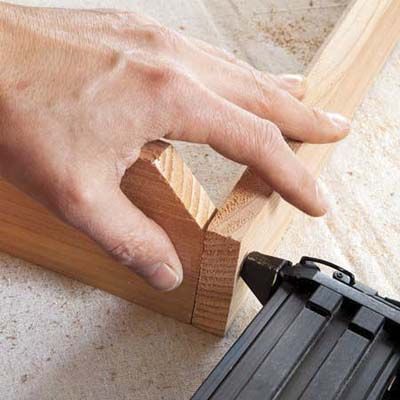
To assemble the tray frames, apply glue to the cut edge of a short side and the end of a long side. Butt these pieces together to form a corner, checking that they’re square. Use the nail gun to drive nails through the top and bottom of the long side and into the edge of the short side.
Repeat this process for all joints in both tray frames, creating sturdy rectangles that will serve as the basis for your cart’s trays. Proper frame assembly is key to the structural integrity of the cart.
Step 5: Attach the Bottom Boards
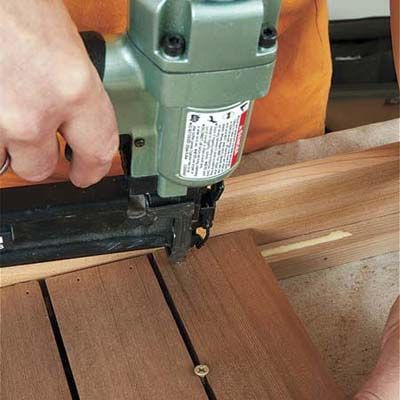
Now it’s time to add the bottom boards to your trays. Start with the top tray by applying glue to the ledges. Lay nine 1×3 boards across the ledges, using a couple of screws as spacers between them to allow for drainage. Secure the ends of the boards to the ledges using the nail gun. For the bottom tray, follow the same process but use ten boards instead of nine. This slight difference in the number of boards accounts for the different dimensions of the two trays.
Step 6: Cut and Mark the Legs
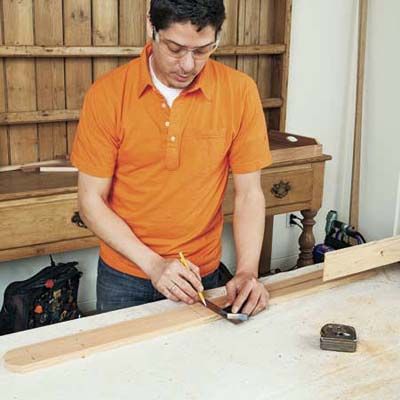
The legs of your bar cart require precise cutting and marking. Use a miter saw to make parallel 45-degree cuts on four 1x2s, cutting them to the size specified in your plans. Cut ¼ inch off the long points at each end for a cleaner look.
Lay the A legs side by side with the cut-off long points flush at one end. Mark each leg’s surface as an “outside face” and measure and mark hole and notch locations on both legs. Repeat this process for the B legs, but mark each leg’s surface as an “inside face.”
Turn all legs on the edge and mark the midpoint between the marks to designate the depth of the notch cuts.
Step 7: Make the Notch Cuts
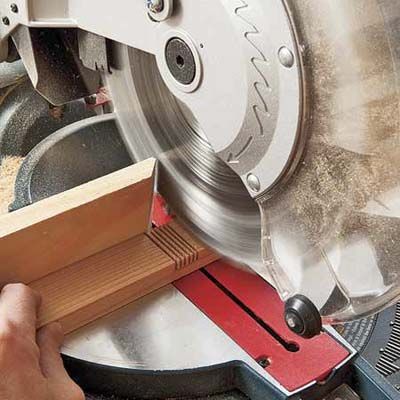
Using a miter saw, make several kerf cuts between the notch marks on the outside faces of the A legs and the inside faces of the B legs. Be careful to stop at the midpoint you marked in the previous step.
Once you’ve made the cuts, use a sharp chisel to carefully remove the wood between the kerfs, creating clean, even notches that will allow the legs to fit together snugly.
Step 8: Drill Holes and Recesses
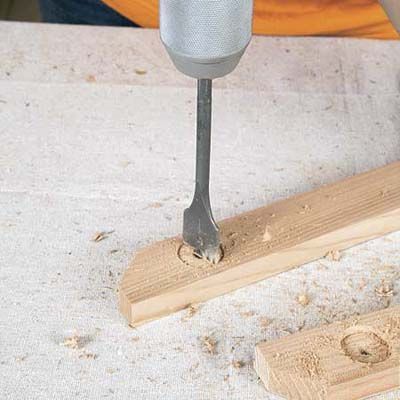
Using a drill/driver with bits sized according to your plans, drill holes through the legs, except for holes through the notches. On the outside faces of the A legs, drill countersinks for the cart handle’s screws.
Flip the A legs over and, on the inside faces, use a 1-inch paddle bit to create ¼-inch recesses centered over the countersinks. These recesses will accommodate the handle hardware. After drilling, smooth all cuts with sandpaper to prevent splinters and achieve a professional finish.
Step 9: Assemble the Sides
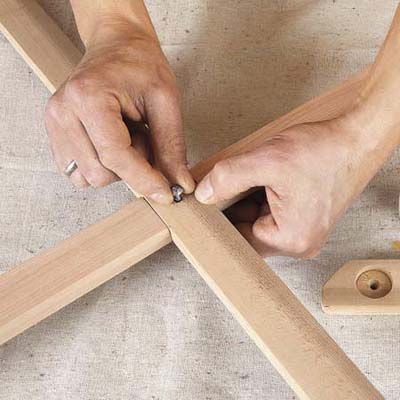
Now, it’s time to bring the sides of your cart together. Follow these steps:
- Fit the notches on the A and B legs together for one side of the cart.
- Drill a centered ¼-inch hole through both legs at the notched intersection.
- Insert a 5⁄8-inch screw post through the notch hole in the B leg.
- Lay the legs on your work surface with the A leg facing up, and insert the screw end of the post into the notch hole in the A leg.
- Begin tightening by hand, then finish with a screwdriver for a secure fit.
- Repeat this process for the second side of the cart, making sure both sides are identical and sturdy.
Step 10: Drill Pilot Holes for the Bottom Tray
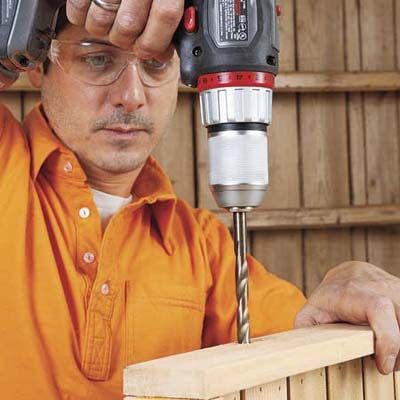
Measure and mark spots for pilot holes on the bottom tray, checking that they’re 1/2 inch above the tray’s bottom. Use a 3⁄8-inch bit to drill four holes through the tray’s long sides and ledges. These pilot holes will make it easier to attach the tray to the cart’s frame and prevent the wood from splitting when you insert screws later.
Step 11: Add Insert Nuts to the Bottom Tray
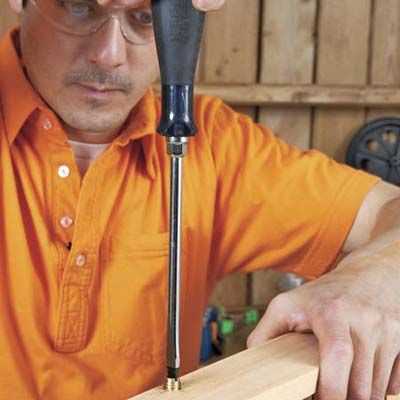
To create strong, removable connections, you’ll use threaded brass insert nuts. Using a flathead screwdriver, carefully screw these insert nuts into the holes you drilled in the previous step. These nuts will accommodate the hex-head connector bolts you’ll use to attach the sides of the cart, allowing for easy disassembly if needed. Don’t over-tighten the insert nuts, as this could damage the wood.
Step 12: Add Insert Nuts to the Crosspieces

The crosspieces that support the removable top tray also need insert nuts. Find the center of each crosspiece end by drawing two lines from corner to corner. Repeat the process from steps 11 and 12 to drill holes and add insert nuts at these spots. This will allow you to securely attach the crosspieces to the cart’s frame while maintaining the ability to remove them if necessary.
Step 13: Assemble the Cart Bottom
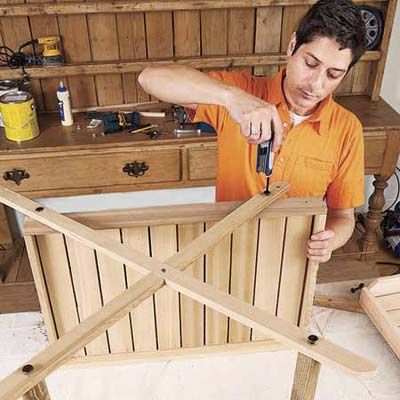
Follow these steps to assemble the cart bottom:
- Stand the bottom tray on a long side and position the crosspieces on their ends.
- Lay one set of the cart’s legs over these pieces, with the handle recess facing down.
- Align the pilot holes with the insert nuts in the tray and crosspieces.
- Use a hex key to twist hex-head connector bolts through the holes and into the nuts, securing the pieces together.
- Fit one end of the handle into the recess and use a 1½-inch stainless-steel screw to attach it to the leg through the countersink.
Step 14: Attach the Second Side
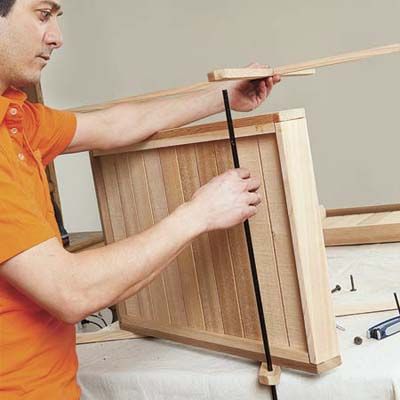
Here’s how to attach the second side of the frame:
- Flip the frame over so the attached side sits on your work surface.
- Thread the axle through the 5⁄16-inch axle hole on the A leg, beneath the bottom tray of the attached side.
- Fit the axle hole of the cart’s second side over the axle, checking that everything lines up correctly.
- Attach the second side of the cart using the same method as in step 13, creating a sturdy, symmetrical frame for your bar cart.
Step 15: Attach Wheels to the Axle
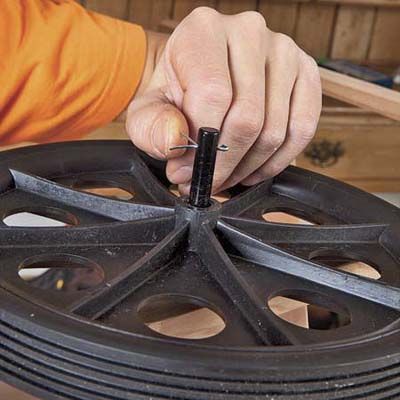
Slip the wheels onto the axle, making sure they spin freely. Insert cotter pins through the holes at the axle’s ends, then bend their legs around the axle to keep the wheels in place. Finally, cover the ends of the axle with the provided axle caps for a finished look and added safety.
Step 16: Build the Bottle Rack
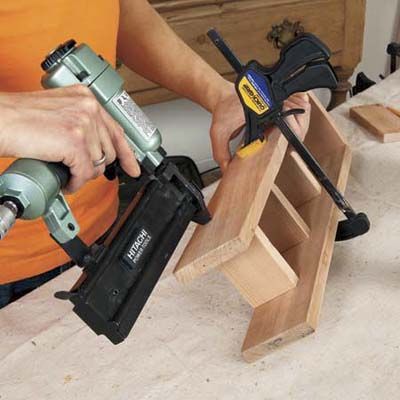
A bottle rack adds functionality to your bar cart, keeping drinks secure and organized. Follow these steps:
- Cut two 1×4 long sides, two 1×3 short sides, and three 1×3 bottle spacers according to the dimensions in your plans.
- Assemble the rack following the process from step 4, starting by attaching the edge of a long side to the end of a short side. Make sure they’re flush at the top edges.
- Attach the spacers along the inside face of the long side, using bottles to create proper spacing.
- Complete the assembly by attaching the second long side and the final short side.
The finished rack should fit snugly onto either tray of your cart. This addition adds functionality and organization to your cart.
